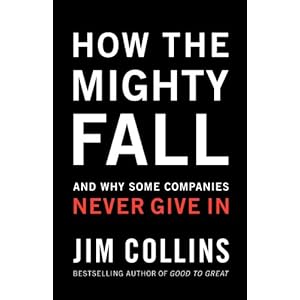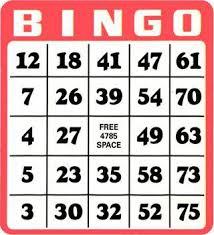How Do We Create: Repeatable, Sustainable, Profitable Growth in our organizations?…Study Both Market Leaders and Market Losers
As leaders we are drawn to success stories. We study businesses teams that seem to defy the odds and win. Teams that realize profitable sustainable growth, even in the worst economic conditions, command our respect and admiration. However, for us as leaders to create teams that drive ; repeatable, sustainable, profitable growth we must study both the market leaders like Apple as well as those that were once leaders who fell from grace like Zenith.
I just finished another book that will definitely be on my must read list for business leaders; How the Mighty Fall; and why some companies never give in, by Jim Collins. As I page through the book once more I see page after page with highlights, underlining’s and notes in the margins. I have been a fan of Collin’s since Good to Great. I enjoy his non emotional, almost scientific approach to the dynamics of business.
Collins identifies the value business leaders can gain by studying companies who did not win and actually fell from grace.
I remember Zenith TV’s when I was a child growing up in Cleveland, Ohio in the 1960’s. They were the best TV’s. If you were to ask anyone who the leader in TV’s was they would have said Zenith back then. However today they are non existent. What happened?
How does this fall from grace occur?
What did they do wrong?
Is it something that was preventable or inevitable?
Are their common early warning signs we can watch for so our teams do not move from a position of “market leader” to “market loser”?
I particularly found his identifying the stages of decline brilliant as I have lived each with various clients over the past 25 years.
Stage 1: Hubris Born of Success
Stage 2: Undisciplined pursuit of More
Stage 3: Denial and Risk of Peril
Stage 4: Grasping for Salvation
Stage 5: Capitulates to irrelevance or Death
In addition to providing the common steps once market leaders often faced on their fall, he also provides what he calls; “markers” or early warning signs to see if your team is in one of the five stages of decline.
I highly recommend this book for business leaders who want to passionately serve their markets while increasing their shareholder value. In this book he draws on an analogy of how a “sick” business is like a sick person. On the outside they may look fine, but upon further investigation you find illness. If you find” Sickness” early enough you can take corrective action to cure the problem and avoid future pain. If arrogantly left unchecked, often due to the “hubris” of stage one, businesses become sick and it can be terminal.
How about your organization? Could your team be in one of the five stages of decline right now?
Does your business need a check up?
Does your team have a culture that would admit a problem?… or do you have Hubris? (Excessive pride that brings down a hero)
Are you battling an 800 pound gorilla in your market that is in denial? Is your team positioned to help your market when they fall?
I want to leave you with a couple of my favorite quotes from this book;
“The path out of darkness begins with those exasperatingly persistent individuals who are constitutionally incapable of capitalism”
“There is no law of nature that the most powerful will inevitably remain at the top. Anyone can fall and most eventually do”
“There are more ways to fall than become great…”
“Great companies can stubble badly and recover”
I think it was Lincoln who said; “those who do not study history are destined to repeat it” I recommend you and your leadership team read and discuss; How the mighty fall. I ask you humbly challenge yourself and your leaders to insure your team are destined for profitable growth and not a fall.








